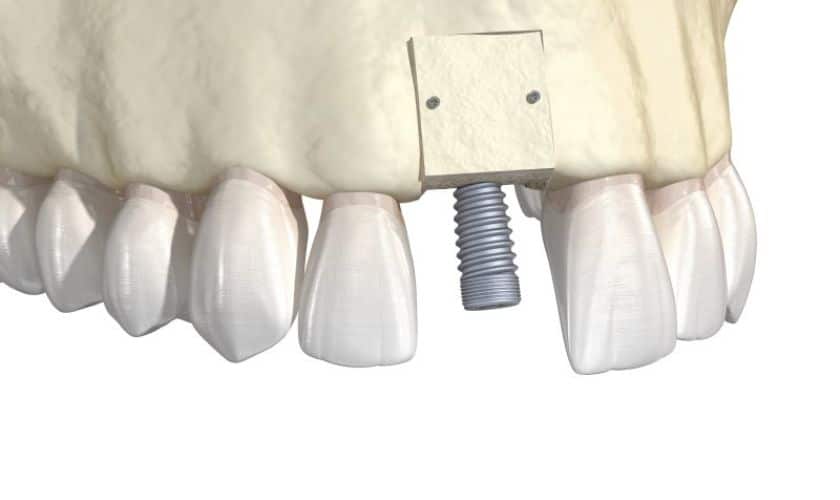Introduction
When it comes to dental implants, bone grafting is a crucial procedure that ensures the success and longevity of the implant. This process involves adding bone material to the jawbone to create a solid foundation for the implant. Understanding the process and recovery of bone grafting is essential for anyone considering dental implants. In this blog post, we will delve into the details of bone grafting for dental implants, explaining the procedure and what to expect during the recovery period.
What is Bone Grafting?
Bone grafting is a surgical procedure that involves transplanting bone tissue to repair and rebuild bones that have been damaged or lost due to injury, disease, or other factors. In the context of dental implants, bone grafting is commonly performed to enhance the strength and stability of the jawbone before implant placement.
Why is Bone Grafting Necessary for Dental Implants?
When a tooth is lost or extracted, the surrounding bone may start to deteriorate over time due to lack of stimulation. This can result in insufficient bone volume and density, making it challenging to place dental implants securely. Bone grafting helps to regenerate and augment the jawbone, providing a solid foundation for successful implant placement.
The Bone Grafting Process
The bone grafting process typically involves the following steps:
1. Initial Consultation
During the initial consultation, your dentist or oral surgeon will evaluate your oral health and determine if bone grafting is necessary. They will also discuss the procedure, potential risks, and expected outcomes with you.
2. Preparing the Donor Site
In some cases, the bone graft material can be obtained from your own body, such as the chin, jaw, or hip. Alternatively, synthetic or donated bone graft materials may be used. The donor site is prepared by making a small incision and collecting the bone graft material.
3. Preparing the Recipient Site
The recipient site, which is the area where the bone graft will be placed, is prepared by creating a small incision in the gum tissue. This allows access to the underlying jawbone.
4. Placing the Bone Graft
The bone graft material is carefully placed into the recipient site. It may be secured with screws, plates, or membranes to ensure stability and proper integration with the existing bone.
5. Closing the Incisions
Once the bone graft is in place, the incisions are closed with sutures. This promotes proper healing and minimizes the risk of infection.
Summary
Bone grafting is a necessary step in the dental implant process, as it provides a stable base for the implant to integrate with the jawbone. During the procedure, bone material is added to the jawbone, either from the patient’s own body or from a donor source. This additional bone stimulates new bone growth, allowing the implant to fuse securely with the jawbone. The recovery period after bone grafting typically involves some discomfort and swelling, but with proper care and follow-up appointments, patients can expect a successful outcome. Understanding the process and recovery of bone grafting is crucial for individuals considering dental implants, as it ensures they are well-informed and prepared for the journey towards a restored smile.

- Q: What is bone grafting for dental implants?
- A: Bone grafting for dental implants is a procedure that involves adding bone material to the jawbone to create a solid foundation for dental implant placement.
- Q: Why is bone grafting necessary for dental implants?
- A: Bone grafting is necessary when the jawbone lacks sufficient density or volume to support dental implants. It helps in strengthening the jawbone and provides a stable base for implant placement.
- Q: How is bone grafting performed for dental implants?
- A: Bone grafting is typically performed by taking bone material from another part of your body or using synthetic bone grafts. The graft is then placed in the area where the implant will be inserted, allowing new bone to grow and integrate with the existing bone.
- Q: Is bone grafting a painful procedure?
- A: The procedure is usually performed under local anesthesia, so you won’t feel any pain during the surgery. However, you may experience some discomfort and swelling during the recovery period.
- Q: How long does it take to recover from bone grafting for dental implants?
- A: The recovery time can vary depending on the individual and the extent of the bone grafting procedure. Generally, it takes several months for the grafted bone to fully integrate with the existing bone before dental implant placement can occur.
- Q: What should I expect during the recovery period?
- A: During the recovery period, you may experience some swelling, discomfort, and minor bleeding. It is important to follow your dentist’s instructions for post-operative care, including taking prescribed medications and maintaining good oral hygiene.
- Q: Are there any risks or complications associated with bone grafting for dental implants?
- A: As with any surgical procedure, there are potential risks and complications, such as infection, bleeding, nerve damage, or graft failure. However, these risks are relatively rare, and your dentist will take necessary precautions to minimize them.
- Q: How successful is bone grafting for dental implants?
- A: Bone grafting has a high success rate and

Welcome to my website! My name is John Nangle, and I am a dedicated and passionate Pediatric Dentist with a strong focus on Cosmetic Dentistry, Orthodontic Solutions, and Dental Implants. With years of experience in the field, I am committed to providing exceptional dental care to children and adolescents, ensuring their oral health and beautiful smiles.

